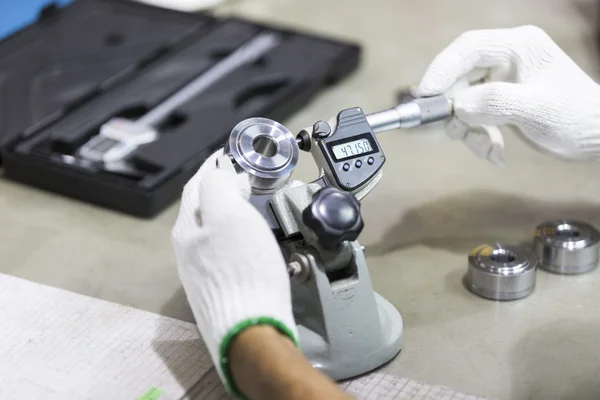Industry, Business, and Science all depend on measurement. A lot of your regular activities involve measurement. One of the key procedures used to keep instruments accurate is instrument calibration. The process of calibrating an instrument involves setting it up such that it can produce results for samples that are within a reasonable range. A key component of instrumentation design is eliminating or reducing conditions that lead to faulty readings. In Modern days, there are so many companies providing Instruments Calibration Services and there many Calibration Management Software available to help them for recording values and issuing calibration certificate to equipment users.
If the equipment employed weren’t calibrated, the accuracy and reliability of all such measurements would likely be questioned. Calibration is a critical step in every measuring procedure. It is because; a measuring device’s accuracy and the trustworthiness of the measured value are guaranteed via calibration. In most of the countries Calibration and Certifications are mandatory by law.
Importance of Calibration
Calibration refers to the accuracy and standard of measuring your tools and equipment. Calibration determines the measurement’s traceability and verifies the instrument’s accuracy. By guaranteeing the accuracy of instruments and equipment, calibration aims to reduce any measurement uncertainty.
The term calibration is interconnected with traceability. Traceability means creating a measuring standard’s or instruments’ accurate calibration by incremental comparisons with higher standards up to an acknowledged national or worldwide standard. Calibration involves comparing a measurement to a higher standard that can be linked to a national, international, or acceptable alternative standard.
The reading from a measuring device should be precise concerning the physical unit of measurement. The ultimate basic unit should be traceable to the physical unit of measurement through calibration. The unit of measurement for a base or derived quantity is defined or reproduced by a material measure or physical feature known as a standard.
Classification of Standards in Calibration Management Software
Standard can be broadly classified into five categories.
- International Standards
- National Standards
- Secondary Standards
- Working Standards
International Standards
International standards are those standards recognized by international agreements. In other words, technical standards created by one or more international standards are known as international standards. The world’s largest voluntary international standard developer is the International Organization for Standardization (ISO), which promotes global trade by establishing uniform standards for all countries.
Two other prominent organizations are contributing to international Standards. They are International Telecommunication Union (ITU) and the International Electrotechnical Commission (IEC). Collectively these three organizations formed the World standards Cooperation Alliance.
National Standards
A national standard is adopted by a national standardization organization and made available to the general public. Like international bodies, national standard organizations may collaborate to create national standards. Federal standards are also called regional Standards or primary standards. Generally, a national standards body (NSB) is a standardization organization representing a nation’s membership in the ISO. One of the hundreds of sector- or industry-based standards organizations that create and disseminate industry-specific standards is a standards developing organization (SDO).
Any measuring instrument that has been calibrated against a primary standard is a secondary standard. Analytical techniques are frequently calibrated using secondary means.
Gage blocks are secondary length reference standards that may be calibrated by contrasting them with primary gage block standards using a mechanical comparator and accounting for temperature. These gauge blocks then serve as the reference standards for determining values for test gauge block sets.
Stainless steel kilos are used as secondary reference standards for mass. They are calibrated by comparing them to the primary criterion on a high precision balance and adjusting for air buoyancy. These weights then serve as benchmarks for determining the values of test weights.
Working Standards
A working standard is an organized set of instructions. They make it simple to complete a task or calibration of equipment reliably, quickly, and repeatedly. Working standards are a crucial component of quality improvement projects and differ from other standard method. No verification or inspection work should be done using a standard that has not been confirmed since it is not regarded as an applicable standard. A work standard’s objective is to succinctly and clearly define a process as the steps necessary to finish a work cycle.
Importance of Calibration Management Software
Calibration Management Software helps Calibration companies to record the details of calibration engineers who have done the calibration of equipment. A Good Calibration Management software can store different templates for Calibration Certificates and procedures for calibration
By comparing a measuring instrument’s value to a higher-level measurement standard, calibration establishes the accuracy of a measuring device. The accuracy of a measurement is estimated by measurement uncertainty. It is the range in which a measurement’s real value is anticipated to fall. The calibration module in Fortuner ERP helps you create different types of Master equipments used to calibrate other equipment. You can also store the names of different engineers doing the calibration.
Through this module, you can create different types of Calibration Orders, Equipment delivery and final delivery of calibrated Equipment and Final invoice to customers. All Calibration transactions are automatically integrated into Finance Module.
In conclusion, Instrumentation and Calibration is crucially necessary whenever measurements are significant because it gives users and companies confidence in the outcomes they track, record, and manage.

